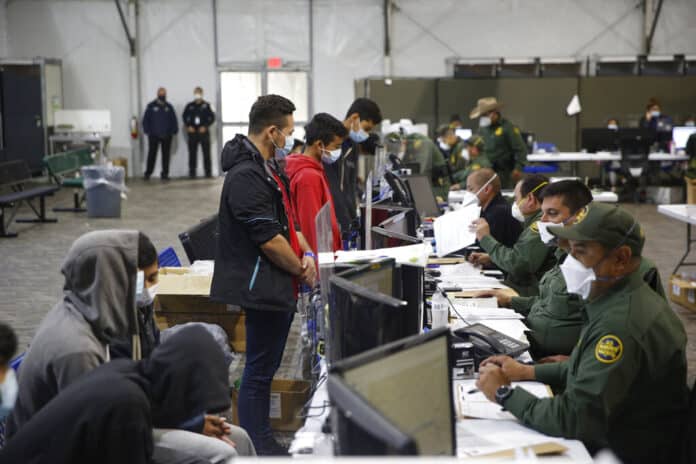Small groups of migrants considered vulnerable will be allowed to enter the U.S. through the ports of entry in Brownsville and later Hidalgo, according to multiple sources.
Most migrants seeking asylum are unable to enter the U.S. due to a federal public health code known as Title 42, but the process starting this week will enforce an existing exception.
Ten Mexican nationals seeking protection in the U.S. were called and allowed to cross the border in Brownsville, according to a pastor who provided them shelter in Matamoros.
“Where they live, there’s a lot of violence right now, and the U.S. government knows that. It’s a lot of cartel violence,” Pastor Abraham Barberi said.
The process first reported by Buzzfeed in late April, allows the government to make humanitarian exceptions of migrants considered vulnerable from the current expulsion process under Title 42.
The designation can be applied to migrants with medical conditions or who are part of the LGBTQ community, as reported by El Paso Matters last week.
Multiple sources who spoke to The Monitor confirm U.S. Customs and Border Protection is working with partners across and along the border to identify vulnerable migrants and assist them once they cross into the U.S.
Sister Norma Pimentel of Catholic Charities of the Rio Grande Valley and Sergio Cordova of Team Brownsville said they are ready to assist in both cities.
Cordova said Team Brownsville was part of a weekly call with ICE, CBP agents and several non governmental groups when the nonprofit was asked to help migrants after they cross through the bridge. They expect to begin their work Tuesday.
Another source familiar with the situation said the groups will likely start small, but may increase up to 25 at a time, with up to two groups crossing a day.
It is unclear how they will be referred to be identified, but international organizations like HIAS (the Hebrew Immigrant Aid Society) in Matamoros will help aid in that process, Pimentel said. It’s expected a different group will assist in Reynosa.
Pastor Abraham Barberi recently converted space at his Matamoros church, Comunidad Esencia Urbana, to take in asylum seekers crowding into the U.S.-Mexico border awaiting entry.
The newly-named Dulce Refugio Shelter at Barberi’s church is currently housing about 115 migrants. The pastor estimated half are people who were sent back to Mexico under MPP, a Trump-era policy, while the other half are Mexican people fleeing cartel violence in southern Mexico — mainly the states of Chiapas, Oaxaca and Guerrero.
On Monday, Barberi said he received a call from HIAS instructing them that 10 Mexican nationals identified by the international organization were selected to receive processing into the U.S. through the Gateway International Bridge.
“They entered legally, and they’ve been waiting patiently,” Barberi said.
Many of the migrants seeking asylum will not be receiving this exception and will likely end up back in Mexico due to the expulsions under Title 42. Recently, a father and daughter with special needs from Honduras were sent back by Border Patrol to Mexico.
The process starting this week will be managed by Customs and Border Protection’s Office of Field Operations, the agency operating the international bridges.
Pimentel said the process to allow vulnerable migrants into the U.S. is set to begin in Hidalgo soon, but did not have an exact date.
A statement from CBP was requested and remains pending.





